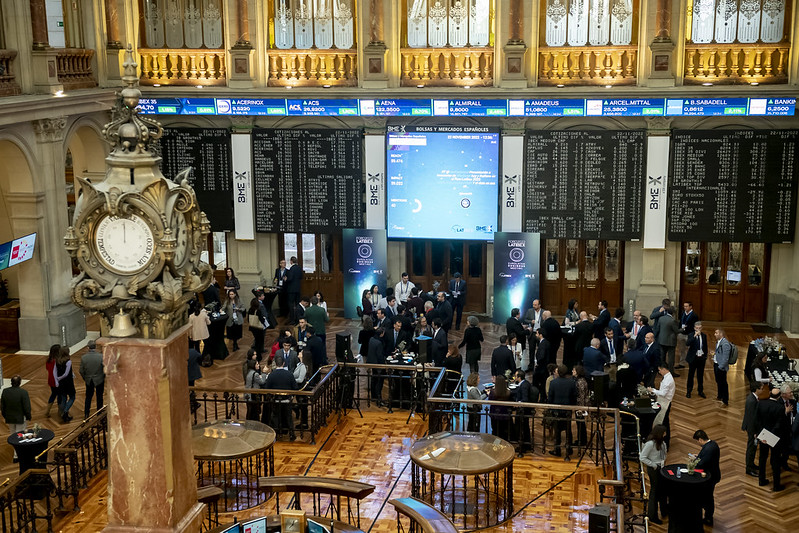LATAM ready to step into the limelight

So what were the main talking points at this year’s Latibex Forum?
A region in recovery
Having suffered particularly badly during the pandemic, LATAM is now firmly in recovery mode, with the IMF (International Monetary Fund) forecasting the region’s economy will grow by 3.5% in 2022. Despite the inflationary shock unleashed on global markets by Russia’s invasion of Ukraine, leading LATAM economies are weathering the crisis well. Luis Isasi, President of Santander in Spain, noted that Brazil and Mexico – which between them account for 60% of LATAM’s GDP – are poised to grow faster than the US, while their inflation rates are at levels below 5%, lower than that of Germany.
Experts at Latibex noted that this is because LATAM markets – such as Brazil – quickly realised that inflation would not be a transitory phenomenon so raised interest rates well ahead of the Federal Reserve and European Central Bank, helping them to keep inflation in check. Having navigated a succession of financial crises in the 1980s and 1990s, LATAM markets have extensive experience of dealing with challenging economic headwinds, something Isasi said put them in good stead when responding to COVID-19 and the knock-on effects from the war in Ukraine.
The prospects look strong for LATAM
Furthermore, Javier Hernani, CEO at BME Group, said economies in LATAM had been shielded from the war’s impact by the soaring global demand for commodities. The disruption to commodities and food supplies caused by the war has meant that countries are seeking alternative supplies, which has benefited producers in LATAM.
The increasing pivot by corporates towards near-shoring supply chain operations is expected to advantage LATAM as well. For instance, Alejandro Padilla, Chief Economist at Banorte, said a growing chorus of North American companies are increasingly looking to near-shore their manufacturing and production operations to LATAM, especially Mexico. This comes as companies look to bolster their resilience following a series of COVID-19 induced supply-chain disruptions, the war in Ukraine and ongoing tensions between the US and China. Whereas previously, corporates mostly outsourced their production chains to low-cost markets – especially in Asia – they are now re-evaluating this model. Although LATAM markets have higher labour costs than Asia, their proximity to North America and relative political stability are a major pull.
The audience also heard that the global green transition away from fossil fuels could spark another commodity boom in LATAM. Obtaining Lithium, for example, – which is used in the batteries that power electric vehicles – will be critical if net zero targets are to be met. German Rios, Chair of the Observatory of Latin American Politics and Economics at IE University, pointed out that 80% of the global Lithium reserves are located in LATAM, in what could be an excellent commercial opportunity for the region.
Nonetheless, experts said LATAM markets had to move away from their traditional boom and bust mentality, highlighting that economic growth is a marathon and not a sprint. Moreover, Rios stressed that LATAM markets needed to diversify their economies beyond just commodities, citing Qatar and its decision to host the Football World Cup as being an excellent example of this. However, LATAM is in a strong position to diversify its economy, as the region’s population is highly educated.
LATAM’s future economic success is also likely to be enabled through the relative political stability in the region. Rios highlighted the peaceful transfer of power following the Brazilian presidential election was indicative of this. Meanwhile, Padilla said that the election of a succession of left-wing governments in LATAM had not disrupted the economy, adding these leaders were adopting a prudent approach towards taxation and respected government institutions.
ESG gathers momentum in LATAM
While it is widely acknowledged that Europe and North America are years ahead of LATAM in terms of ESG (environmental, social, governance) maturity, the region is catching up, said Maayan Beeber, Director Corporate Solutions at Sustainalytics. In particular, there have been a number of issuances of sustainability linked bonds in LATAM. These include Brazil-based Iguá, a sanitation company which issued a BRL 880 million green bond - the use of proceeds of which will help finance the supply, treatment and distribution of water and sewage collection infrastructure.
As with many markets, ESG and sustainable investing does face challenges in LATAM. Agustin Vitorica, CEO at Gawa Capital, said there are still a number of differences between the various ESG regulations and taxonomies being implemented globally- a problem which is creating confusion for cross-border companies and investors. The ubiquity of competing ESG industry standards is also a problem, with some urging the market to embrace harmonisation. Amid so much uncertainty, experts warn that greenwashing is becoming a very real problem, something which risks undermining the ESG market.
LATAM takes centre stage
With inflation in major markets reaching levels not seen in 40+ years, LATAM stands apart. Once synonymous with volatility and erratic monetary policy, LATAM has kept inflation under control. LATAM – as a leading commodity producer – is also in a strong position to help other markets obtain natural resources amid supply chain disruption elsewhere and the transition to a greener economy. Owing to its strong underlying fundamentals, LATAM is likely to become increasingly incorporated into investors’ portfolios moving forward.
As we move into 2023, LATAM is poised to be one of the few regions in the world that is expected to thrive during this period of unprecedented volatility.
